Midweek Review
A dilemma like no other!
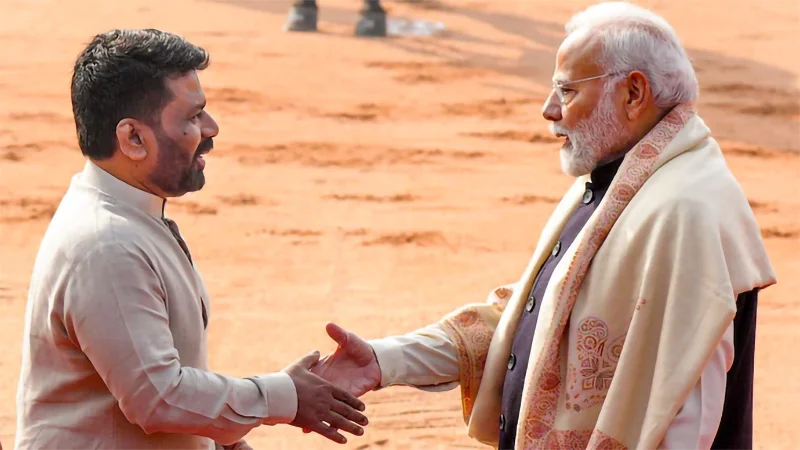
Two contentious issues that may never be resolved are disagreement between India and Sri Lanka over granting police and land powers to Provincial Councils, arm twisted by New Delhi into establishing them here along with the signing of the Indo-Lanka Accord following the infamous parippu drop over the North in 1987 and organized poaching by Tamil Nadu fishers, a problem that can be addressed only by India deploying its powerful Coast Guard, backed by the Navy, to prevent violation of Indo-Lanka maritime boundary.
By Shamindra Ferdinando
Sri Lanka is in a tight spot. Joint statements issued by India and Sri Lanka on Dec, 16, last year, and China and Sri Lanka on January 16, this year, following President Anura Kumara Dissanayake’s state visits to New Delhi and Beijing, respectively, underscored the daunting foreign policy challenges faced by the new Sri Lankan leader whose National People’s Power (NPP) secured a landslide victory at the Nov. 2024 parliamentary election, promising a literal sea change.
Dissanayake is also the leader of the Janatha Vimukthi Peramuna (JVP), a once rabidly anti-Indian political movement that waged two unsuccessful insurrections, in 1971 and 1987-1990. Under the JVP’s leadership, the NPP was formed in 2019, just ahead of that year’s presidential election.
Against the backdrop of an unprecedented political environment that had been created by the routing of existing major parties and the emergence of the NPP as the dominant political force here, the Asian giants are determined to consolidate their own separate position here. The joint statements emphasized their agenda.
The issues at hand cannot be examined without taking into consideration the strong and growing US-India relationship, in spite of the latter playing safe in the Russia-Ukraine war and the US-China conflict, as well as the US and India teaming up against Beijing. It appears, however, neither the US nor India trust each other. Their game plan is to try use the other for one’s own benefit in their current marriage of convenience. Washington, without doubt, considers both China and India are a threat to US hegemony.
Whether hapless Sri Lanka likes it or not, or regardless who wields political power here, the major powers won’t change their strategies. That is the unpleasant reality.
In the wake of President Dissanayake’s four-day visit to Beijing (January 14 to 17), a section of the Opposition engaged in the usual criticism of the NPP government, though they generally remained silent on the outcome of his New Delhi visit. China and India dominate major political parties represented in Parliament and the continuing political-economic-social turmoil facilitated their agenda. Our treacherous political party system is obviously incapable of addressing developing challenges. They have pathetically failed to reach consensus on national response to external interventions thereby allowing major powers to manipulate the country.
Having perused the two joint statements, the writer is of the view that in spite of Sri Lanka being party to both, they are contradictory and seem unrealistic to a certain extent. The bottom line is Sri Lanka cannot play ball simultaneously with China and India suspicious of each other. They are hell-bent on undermining each other and Sri Lanka is caught up in an utterly dangerous game. Sri Lanka is stuck in the China-India conflict and obviously there is no way out. Whatever Sri Lanka does may antagonize either party and Colombo seems helpless. The joint statements highlight Sri Lanka’s predicament. Nothing can be as absurd as Sri Lanka declaring a shared future with both India and China. In fact, the 34-point Indo-Lanka joint statement was headlined ‘Fostering partnerships for a shared future.’
While India based its relationship with Sri Lanka on the basis of Premier Narendra Modi’s ‘Neighborhood First Policy’ (read India first policy) and ‘SAGAR’ vision (Security and growth for all in the Indian Ocean region) meaning our giant neighbour is primus inter pares, China focused on what the joint statement described as deepening traditional friendship and advancing high-quality Belt and Road cooperation widely discussed as a massive China-led infrastructure project.
But unlike China, India being our giant neighbour she is overbearing and it would be wise of us to handle India with extreme care. Therefore allowing her to have a monopoly position in any part of our economy is asking for trouble to say the least.
Launched in 2013 the China project is also known as ‘Belt and Road Initiative’ (BRI) and ‘New Silk Road.’ The US and its allies are strongly opposed to the Chinese project, originally called ‘One Belt One Road’.
India strongly opposes any Chinese initiative here hence the joint statement issued following President Dissanayake’s visit must have disappointed New Delhi greatly. The truth is that the statement from Beijing questions the very basis of the joint statement issued on Dec. 16th last year. Regardless of Western and Indian pressure, Beijing has constantly advanced its own project here and elsewhere.
India’s main grouse is the sea and land-based China-Pakistan Economic Corridor (CPEC) that may give China a strategic advantage over India.
Key points in Jan. 16 statement
President Dissanayake’s delegation to Beijing included two Ministers – Foreign Affairs, Foreign Employment and Tourism Vijitha Herath, and Transport, Highways, Ports and Civil Aviation Minister and Leader of the House Bimal Rathnayake. Both are senior JVPers who stood by Dissanayake during the internal turmoil within that party during Mahinda Rajapaksa’s tenure as the President (2005-2014).
President Dissanayake met President Xi Jinping, Premier of the State Council Li Qiang and Chairman of the Standing Committee of the National People’s Congress Zhao Leji.
In line with the overall Chinese approach, their focus was on Belt and Road cooperation. Against that background, the joint statement emphasized the pivotal importance of advancing what the Chinese called ‘high quality Belt and Road cooperation.’
They reiterated unwavering commitment to what the joint statement described as expanding China-Sri Lanka strategic cooperative partnership.
Then they also decided to sustain ‘close high-level exchanges in keeping with ‘strong strategic guidance’ given by the Chinese and Sri Lankan leaders.’
Sri Lanka repeated its longstanding commitment for ‘One-China’ policy or principle in line with the United Nations general assembly Resolution 2758 passed on Oct. 25th, 1971. In other words, that Resolution accepted Taiwan as an inalienable part of China. It would be pertinent to mention that India, too, accepted the ‘One-China’ principle but over the years refrained from reiterating its position. According to the joint statement, Sri Lanka fully backed all efforts by China to achieve national reunification.
Sri Lanka also assured that the country wouldn’t be a platform for anti-China activity and also backed Beijing in respect of issues related to Xizang (Tibet) and the predominantly Muslim Xinjiang regions where China is under Western fire over purported human rights violations.
The UN that often echo Western line saw its Human Rights Chief Volker Turk jumped to criticise Chinese actions in the above-mentioned regions and the Chinese alleged that the UNHRC strategy is meant to undermine China.
In the fifth paragraph of the joint statement with Colombo that dealt with the contentious Xizang and Xinjiang issues, China reiterated its ‘commitment to an independent foreign policy of peace’ whereas Sri Lanka repeated its pledge for ‘an independent non-aligned foreign policy.’
Having been trapped in Chinese, Indian and Western machinations, declaration of ‘an independent non-aligned foreign policy, ‘seemed ridiculous.
The focus on Belt and Road cooperation was underscored with Sri Lanka’s acceptance of President Jinping’s flagship project key to economic and social development. Therefore, the reiteration of the pivotal importance of the Colombo Port City and Hambantota Port, both built by China, didn’t surprise anyone. However, eyebrows were raised that China and Sri Lanka entered into a Belt and Road cooperation plan meant to upgrade/strengthen the Chinese flagship project.
Once Gotabaya Rajapaksa told the writer how Indian National Security Advisor (NSA) Ajit Doval pressed him to cancel major Chinese projects here. Responding to queries raised by the writer in Dec., 2016, Gotabaya Rajapaksa explained the dissimilarity between Doval and his predecessor Shivshankar Menon (January 2010 to May 2014) who had served as Foreign Secretary before receiving the appointment as NSA.
The former Defence Secretary said Menon, in his memoirs, Choices: Inside the Making of India’s Foreign Policy had acknowledged the understanding between the Mahinda Rajapaksa government and India during the war and post-conflict period. However, Menon’s successor Ajit Doval had taken an entirely different stand vis-a-vis Sri Lanka, Rajapaksa said.
Rajapaksa said Doval called for the cancellation of the USD 1.4 bn Chinese flagship project, the Colombo Port City. In addition to that demand which Rajapaksa said was very unfair, India demanded that Sri Lanka take over the Colombo International Container Terminals Limited (CICT), a joint venture between China Merchants Port Holdings Company Limited (CMPH) and the Sri Lanka Ports Authority (SLPA).
CMPH holds 85% of the partnership whilst the balance 15% is with the SLPA.
Rajapaksa quoted Doval as having told him that India wanted all Chinese funded infrastructure projects stopped and for Sri Lanka to have full control of the Hambantota Port. Rajapaksa quoted Doval as having told him: “Sri Lanka is a small country, you don’t need such development projects.”
Maritime issues, etc.
In addition to Sri Lanka seeking early implementation with China of what the joint statement called an agreed debt restructuring plan and early conclusion of a comprehensive free trade agreement, they dealt with maritime cooperation. They agreed to conduct regular bilateral consultations on maritime matters.
China and Sri Lanka decided to sign a Memorandum of Understanding (MoU) on Ocean Cooperation to pave the way for what the joint communique called Blue Partnership. The Blue Partnership is obviously an integral part of the Belt and Road Cooperation.
The joint statement conveniently refrained from making reference to the contentious issue of Chinese research vessels’ visit to Sri Lanka. Repeated Indian and US protests during the early phase of Ranil Wickremesinghe’s presidency (2022 July-Nov 2024) compelled the beleaguered leader to declare a moratorium on such foreign vessels. That decision was meant to prevent Chinese research vessels entering Sri Lankan waters. The Indian media had routinely categorized all Chinese research vessels as spy ships.
President Dissanayake’s government is yet to announce its stand on Wickremesinghe’s moratorium on such foreign ship visits. In spite of Minister Vijitha Herath’s declaration on Dec., 20, 2024, that a special committee would be established to implement a national policy in respect of foreign vessels seeking to enter Sri Lankan waters nothing has been heard so far of the proposed committee.
Regardless of repeated assurances that Sri Lankan territory won’t be used against India’s security interests, the Modi government is seriously concerned over Chinese moves here. India hardened its stance after the Yahapalana government (2015 January to 2019 November) leased the strategically located Hambantota Port on a 99-year lease to China in 2017. That increased Indian concerns as China consolidated its position here. It would be pertinent to mention that China secured what it wanted in spite of the Yahapalana government initially taking an extremely hostile position towards Beijing. The Yahapalana government went to the extent of suspending the Colombo Port City project in March 2015. But, China Communication Construction Company (CCCC) resumed the project in August 2016 after China and Sri Lanka settled differences over the project that was finalized in Sept. 2014 in the presence of President Jinping in Colombo.
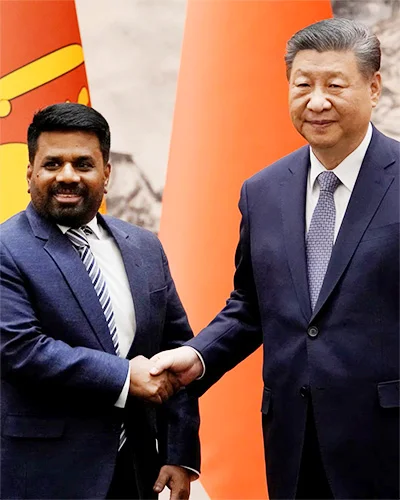
Chinese leader Jinping with President Dissanayake
In addition to the USD 1.4 ban Colombo Port City project, China invested USD 1.2 bn in the Hambantota Port. But, President Disanayake’s Office claimed that it secured a fresh investment of USD 3.7 bn for a state-of-the-art oil refinery in Hambantota. That investment declared as the single largest FDI by the President’s Office is part of the Belt and Road cooperation.
However, the UNP has challenged the President’s claim, emphasizing that the agreement on an oil refinery with China was finalized in Nov. 2023 by President Wickremesinghe’s administration.
According to the UNP, Sri Lanka reached consensus on Chinese investment due to the delay in construction undertaken by a consortium that included Silver Park International (Private) Limited of Singapore (controlled by India’s Accord Group) and Oman’s Ministry of Oil and Gas. Interestingly, that agreement had been signed in March 2019 during Maithripala Sirisena’s presidency.
China hasn’t allowed domestic politics here to derail their plans. The Chinese strategy is on track. The Hambantota Port agreement and the proposed oil refinery at Mirijjawila are cases in point. Having signed a deal on the construction of a brand new international port at Hambantota during Mahinda Rajapaksa’s presidency, China secured the port for a mere USD 1.2 bn from the Wickremesinghe regime.
Later President Gotabaya Rajapaksa found fault with the Yahapalana administration for leasing the port to China. Declaring that the leasing of the Hambantota Port was a mistake, Gotabaya Rajapaksa, in his first interview as President with Nitin A. Gokhale, Editor-in-Chief of Bharat Shakti.in and SNI, in late Nov. 2019, said he wanted to renegotiate the deal. The Yahapalana deal covered the port and approximately 15,000 acres around it. China simply dismissed that notion about an agreement concluded with the previous Yahapalana regime. Since then no one dared to take up that issue. China obviously intends to consolidate its position in the South around Hambantota, just as India tightens its grip around Northeast Sri Lanka, which includes the world’s fourth largest natural harbour at Trincomalee earlier coveted by the US.
Post-Aragalaya developments
In the run-up to the presidential election last Sept, India indicated what it desired from the new President. On behalf of India, Pathfinder Foundation presented a comprehensive proposal meant to consolidate Indo-Lanka partnership to all presidential candidates.
During President Disanayake’s visit, India built up on the agreement Premier Modi finalized with President Wickremesinghe in July 2023. Like China, India, too, since the successful conclusion of the war in 2009, advanced its strategy, here, meticulously.
However, China never matched Indian financial assistance during the unprecedented crisis here. India provided assistance posthaste. According to Premier Modi, India extended grants and Lines of Credit worth USD 5 bn to Sri Lanka during the presidencies of Gotabaya Rajapaksa and Ranil Wickremesinghe. In fact, NPP leader Disanayake in the run-up to the presidential election thanked India for unprecedented assistance provided in the hour of Sri Lanka’s need.
New Delhi also paid USD 20.66 mn to settle payments due from Sri Lanka for Indian projects here completed under operational Lines of Credit.
A major difference between India-Sri Lanka joint statement and China-Sri Lanka communique is the former’s focus on defence relations. During a joint media briefing with President Dissanayake in New Delhi Premier Modi declared that he and President Dissanayake decided to quickly finalize the Security Cooperation Agreement. However, the Indo-Lanka joint statement differed from Premier Modi’s declaration in respect of the proposed Security Cooperation Agreement.
According to the joint communique, India and Sri Lanka agreed to explore the possibility of concluding a framework agreement on defence cooperation. Under a section headlined ‘Strategic & Defence Cooperation’, the communique dealt comprehensively with Sri Lanka’s needs. India addressed the issues at hand while assuring backing for defence needs. But, entering into a Security Cooperation Agreement /Defence Cooperation Agreement as mentioned in the joint communique, cannot under any circumstances be taken by the government without having consensus with all political parties represented in Parliament.
India’s offer should be examined keeping in mind Sri Lanka never sought a defence agreement with any particular country, even during the difficult war to defeat LTTE terrorism that lasted for about 30 years, but somehow procured arms, ammunition and equipment as well as training from a wide range of suppliers, including China, Israel, Pakistan, Czechoslovakia, Ukraine as well as Russia. The matter is definitely bone of contention for obvious reasons.
Although India caused terrorism here in the ’80s and should be held responsible for massive death and destruction caused, the war couldn’t have been brought to a successful conclusion without New Delhi’s silent, but invaluable backing to defeat the LTTE during the final Eelam War (2006 Aug. to 2009 May). That is the hard truth. Many people may find that hard to accept. With the LTTE getting too big for its shoes, with subtle backing from the West, especially by turning a blind eye to its terror infrastructure like drug running and arms smuggling from their countries, India, too, was left with no other option, especially after it daringly assassinated its beloved former Premier Rajiv Gandhi on its own soil.
Midweek Review
Humanities in Medical Education
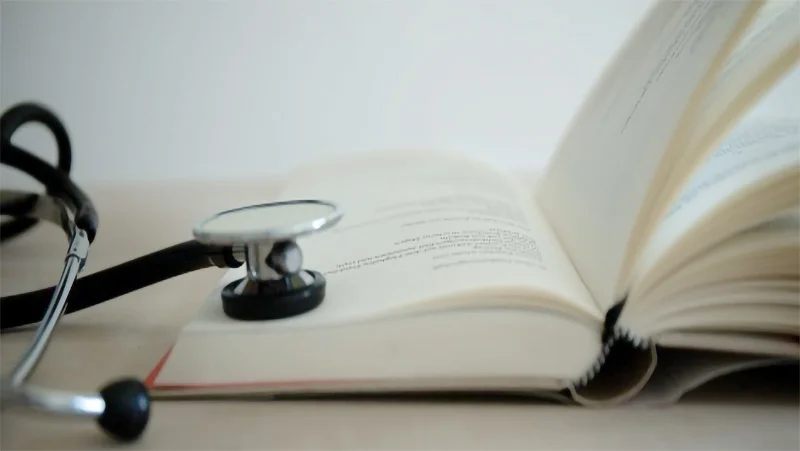
By Dr. Siri Galhenage
sirigalhenage@gmail.com
‘They are shallow animals, having always employed their minds about Body and Gut, they imagine that in the whole system of things there is nothing but Gut and Body’
Samuel Taylor Coleridge [1772-1834]
The above derisive comment regarding doctors was made by the renowned romantic poet and philosopher, over two centuries ago. He was aggrieved by the predominantly biological preoccupation by doctors in the practice of their craft, giving less credence to a broader perspective about life. He was perhaps roused by the growing interest in a natural basis for disease and healing during the Renaissance period [14 – 17 centuries] in the West, with the emergence of anatomically based scientific medicine, moving away from mystic and spiritual traditions.
A HOLISTIC APPROACH to the PRACTICE of MEDICINE: A HISTORICAL PERSPECTIVE
Over the years, scientific medicine has progressed, with the development of high-tech diagnostic techniques exploring deeply into the body, its tissues and cells, and the discovery of effective pharmaceutical weapons against organic disease. This powerful science-based biomedical tradition spread globally and has remained dominant, despite a greater conceptualisation of social and psychological issues pertaining to health and well-being. As a result, the medical profession has tended to develop a sense of therapeutic self-confidence, with a tendency to ignore the psychosocial aspects of medicine and the benefits of the doctor-patient relationship, giving less importance to a display of humanity. It is true to say that, as a result, there is a growing discontent towards the medical system and the medical profession in recent times.
The above disparity in healthcare has attracted the attention of medical educators around the globe, who have started introducing a holistic [broad-based] approach to training of doctors by incorporating Humanities in the medical curriculum. ‘A Good Doctor Treats the Disease; A Great Doctor Treats the Patient’.
It was heartening to read Randima Attygalle’s interview with Dr. Santhushi Amarasuriya titled, ‘Medical Humanities: an interdisciplinary approach to holistic health’ regarding the initiative by the Faculty of Medicine, Colombo, in establishing a Department of Medical Humanities [Sunday Island: Oct. 6, 2024]. I also read with interest the scholarly articles by Susantha Hewa, ‘Humanities in the ‘art’ of healing: A case for subject integration’ [The Island: Oct. 16, 2024] and by Prof. Liyanage Amarakirthi of the University of Peradeniya: ‘Increasing scholarly mutuality for holistic understanding of life: Some initial reflections’ [The Island: Nov. 6, 2024], addressing the need for subject integration.
ROLE of HUMANITIES in MEDICAL EDUCATION
The aim of including Humanities in medical education is to nurture the desirable personal qualities in a medical practitioner in becoming a healer in the true sense of the word.
1. In gaining a broader understanding of the human condition in order to adopt a more holistic approach towards the practice of medicine.
2. In developing empathy and compassion towards one’s patients while maintaining professional boundaries.
3. In acquiring appropriate and effective communication skills in dealing with patients, as well as respectful discourse with colleagues and the team that the doctor works with.
4. In maintaining professional boundaries and ethical and moral standards.
5. In cultivating personal growth and resilience in having to confront the many challenges and adverse circumstances faced during the course of a doctor’s professional life.
HUMANITIES: ETYMOLOGY AND SCOPE
The base word ‘human’ with its Latin root ‘Humanus’, which refers to the characteristics of mankind has generated a range of derivatives with shades of meaning. It has given birth to such terms as ‘humane’ [which refers to being compassionate]; ‘humanitarian’ [having the welfare of mankind at heart; ‘humanism’ [the belief in human effort rather than divinity]; ‘humanity’ [which connotes mankind and civilisation]; and ‘humanities’ [a collective of academic disciplines that study the human condition].
Humanities, as opposed to biological and physical sciences, embody a wide range of disciplines, such as languages, literature, the arts, history and philosophy, and their critical evaluation. Religion and divinity are not within the range of interest of humanities, although their relevance in the spiritual growth of mankind cannot be disregarded.
RELEVANCE of CLASSICAL LITERATURE
in MEDICAL HUMANITIES
My focus here is classical literature which is an integral part of the discipline of Humanities. Great works of literary art attempt to explore and transmit the full range and depth of human experience, calling into play our emotional and intellectual faculties. Literary analysts observe that art and literature have the capacity to ‘convey serious truths and significant ideals’, ‘broaden our understanding of human nature’, ‘kindle our imaginations’, ‘raise our spirits’ and ‘enhance our sensibility’ [to quote Prof. Frodsham, late Professor of comparative literature, Murdoch University, Perth, Western Australia]. Those works regarded as of high quality are deeply humanistic and provide insights which enrich human existence, elevating our lives to a higher plane of functioning.
Works of literary artistry provide socio-cultural awareness, psychological insights, moral and ethical consciousness, in addition to aesthetic appreciation – the confluence of all of which has now evolved into the notion of literary sensibility, first conceived by the legendary English poet Geoffrey Chaucer of Canterbury Tales fame. It is a sensibility every human being should aspire to develop, the doctor in particular, who is expected to take on the task of healing.
Great writers tend to exercise their literary talent in directing the reader in achieving personality growth vicariously through the portrayal of characters and the situations they create. It is an enriching experience which generates an appreciation of beauty, use of metaphor, psychosocial insights [intra-psychic and interpersonal] that reflect societal attitudes, and moral instruction.
NURTURING LITERARY SENSIBILITY
While strongly advocating the introduction of Humanities in Medical Education, I believe that there should also be a greater emphasis by educational authorities on nurturing reading ability in children from their early formative years, as a way of sensitising them to literature in their later life. Reading with children and exploring their thoughts about what is read and helping them to understand and articulate their thoughts about life within their capacity, is called ‘conversational reading’.
The more young children read, are read to, and are engaged in conversation that flows on from stories read, the more they begin to love books [and words], increase their vocabulary and enhance their communication skills. It enhances a child’s self-worth and personal identity sadly lacking in those who lag behind reading for whatever reason. What better way for children to be introduced to the world that they are to be part of than be immersed in a story that is all about beings that surround them? What better way for children to learn about ideas and speech patterns, how people interact and react, how dialogue reveals more about a person than what they say, and gain an understanding of empathy and compassion? There is no better way to convey moral instruction than by vicarious learning through reading, and no better way to enhance their thinking and reasoning, to generate creativity and to introduce them to a life rich in meaning.
We in Sri Lanka are endowed with an ancient literary tradition that fosters literary sensibility. As far back as between the 7th and 10th century AD, our ancestors scribbled their sentiments in poetry on the mirror wall of Sigiriya Rock [Sigiri Kurutu Gee]. Our ancient scholars produced great literary works such as Sandesha Kavya, Kavya Sekaraya, Guththilaya, Subhasithaya [to mention a few], and in the 15th Century AD, King Parakramabahu the 6th. gave patronage to literary discourse. As a nation, we hold a predisposition to develop literary sensibility.
A FEW EXAMPLES of LITERARY ART to
ILLUSTRATE THEIR VALUE IN
MEDICAL HUMANITIES
I have cited below, a few examples of literary art, many of global fame, in order to illustrate their value in understanding human nature by tapping into their allegorical meaning. It was not my intention to suggest including them in a reading list in medical humanities; although some of them may attract the interest of the medical educators and the general readership.
Rudyard Kipling, in his narrative masterpiece, ‘Kim’, takes a Tibetan Lama and his disciple across what he calls ‘the great and wonderful land of Hind’ [India] along ‘the grand trunk road, teeming with life’ [a metaphor he uses for the path of life’]. The travellers are on a quest for understanding of humanity with the hope of achieving personal growth.
In an inspiring piece of lyrical ballad, The Rhyme of the Ancient Mariner, Samuel Coleridge, places his protagonist on board a ship and sends him off on a voyage – an archetypal journey of life with its trials and tribulations. The poet exposes the vulnerability of the human condition by making him commit an impulsive act of killing the albatross that guides him. He faces the wrath of nature, takes on board a burden of guilt and suffering, and on reaching the shore, embarks on a spiritual path, elevating him to being a productive human being.
Viktor Frankl, the celebrated Austrian psychiatrist of Jewish descent proposed the theory that the primary motivational force in man is to find meaning in life. He developed his theory, which gained wide application in medical practice through his direct personal experience as a prisoner in Auschwitz, the Nazi concentration camp, which led to his popular publication, ‘Man’s Search for Meaning’.
Leo Tolstoy, the Great Russian author skilfully constructs the character of Ivan Ilych in his much celebrated novella, ‘The Death of Ivan Ilych’. The author takes his protagonist, an upwardly mobile lawyer, to the top of a ladder, and makes him fall off it, both literary and metaphorically, into an abyss of misery. The crisis precipitates a terminal illness that makes him evaluate his life and gain insight into the inescapable truth about life – suffering – which reflects the author’s spiritual leaning towards Buddhism. In addition, the novella provides a brilliant portrayal of the patient’s ‘Abnormal Illness Behaviour’ and the ‘Doctor- Patient Relationship’ that should attract the attention of the student of Medicine.
As many scholars believe, there is no other literary artist than William Shakespeare who has had an in-depth understanding of the human condition, long before formal study of the human mind was undertaken by psychologists and psychiatrists. In his Magnum Opus, ’Hamlet’, he gives dramatic expression to the mourning and melancholy of Prince Hamlet, and the flight into a state of mania of grief-stricken Ophelia – two of his skilful character developments. He depicts the genesis of morbid jealousy in ‘Othello’ [a favourite of Psychiatrists!], and the existential dilemma of old age in ‘King Lear’, to mention a few. In his narrative poem ‘Lucrece’, Shakespeare poignantly gives lyrical expression to the agony and the psychological consequences of a victim of a sexual assault.
William Wordsworth, the lake poet of ‘The Daffodils’ fame maintained a high degree of resilience throughout life despite a series of personal losses including the loss of both his parents during his early development. He gained his inner strength by being nurtured by nature, the source of his creative energy-his sorrows sublimated through poetry. Wordsworth raises nature to a divine level to underscore her importance to man as teacher and healer.
Prose, verse and song often merging into one, and carried into a musical crescendo with matching melody was the main channel through which Rabindranath Tagore directed his creative energy. His wisdom is embodied in the ‘primordial truth’ of the interconnectedness of man and nature and the cosmic whole which formed the philosophical basis of his musical compositions. The predisposition to such confluence of feeling and nature occurred during his formative years: born to a family of 14 he was alone but not lonely, having nature as his companion, allowing his imagination run wild.
Many critics believe that Martin Wickremasinghe’s novel ‘Viragaya’ [dispassion] displays the best of his literary prowess. His skill in crafting the personality profile of Aravinda Jayasena, the protagonist of the narrative, makes it unique amongst his many works of creative literary artistry. It depicts the journey towards peace and tranquillity of a young man attempting to shed off all his passions. Often dubbed the ‘psychological novel’, Viragaya’s appeal is in the behavioural profile of Aravinda, which leaves the ‘psychological minded’ reader to mull over the complexities of his character.
Sinhabahu,
the mythical tale of the origin of the Sinhala race given dramatic expression by our greatest playwright, Prof. Ediriweera Sarachchandra, depicts a deeper psychological meaning of a young man’s separation and individuation by breaking away from his family to develop his own identity. The play enjoyed by many of us at the ‘wala’ at my alma mater in Peradeniya, oblivious then to its allegorical meaning!!
METHODOLOGIES in INCORPORATING
HUMANITIES in MEDICAL EDUCATION
Reorientation of the student of medicine by integrating humanities into the demanding medical curriculum is a challenge due to wider issues in our education system. Students who follow a science-based education with the intention of entering medical school perceive a dichotomy between natural sciences and literature. The dichotomy is a spurious one as both disciplines deal with the human condition! Those educated in evidence-based science subjects with ‘hard facts’, consider literature as a ‘softer’ area of study. The highly competitive tertiary entrance examination encourages the gathering of factual knowledge giving the student less time to be engaged in the arts and literature and to be absorbed in reflection.
As stated above, our nation is endowed with an ancient literary tradition well-placed to nurture literary sensibility. But many educationists today lament that we have lost our romance with the written word. Starting from the pre-school stage a significant restructuring of our education system is warranted to realise our literary potential.
A wide range of methodologies are used globally in incorporating Humanities into the medical curriculum. These include role play, use of video clips etc.
A common methodology used in the application of literature in Medical Humanities is the technique of ‘Close Reading’. It involves looking at a specific piece of text eg. a narrative poem, a short story or novella, and examining it in close detail in order to draw the imaginative and analytic skills of the student. It involves the exploration of characters, their personality profiles, the way they communicate with each other and the events and crises they create; appreciating the sociocultural context in which they occur; the student’s emotional response to the characters and situations; the allegorical meaning beneath the literal narrative; and the recognition of any underlying moral instruction. The intention is to create a safe environment for the students to freely discuss their observations. The facilitator navigates the discussion towards a clinically meaningful territory.
CONCLUSION
With the rapid progression of medicine into a technologically advanced profession, Social Sciences and Humanities as essential aspects of the Art of practice of medicine has struggled to occupy space in the heavily loaded medical curriculum. Classic literature, as a component of Humanities, has a role to play in meeting this need, vicariously, by fostering literary sensibility [and hence psychosocial and moral cognizance] through the allegorical themes presented by great works of literary art. Also, an added challenge posed by technological advances is the loss of our romance with the written word with the loss of sensibility during formative years, requiring an overhaul in our education system.
‘Wherever the art of medicine is loved there is also a love of humanity’ – Socrates.
[The writer is a retired Consultant Psychiatrist resident in Perth, Western Australia. He is a former examiner to the Royal Australian and New Zealand College of Psychiatrists, and the recipient of the 2023 Meritorious Service award of the RANZCP [WA Branch]. sirigalhenage@gmail.com
Midweek Review
Wielder of the Victorious Pen
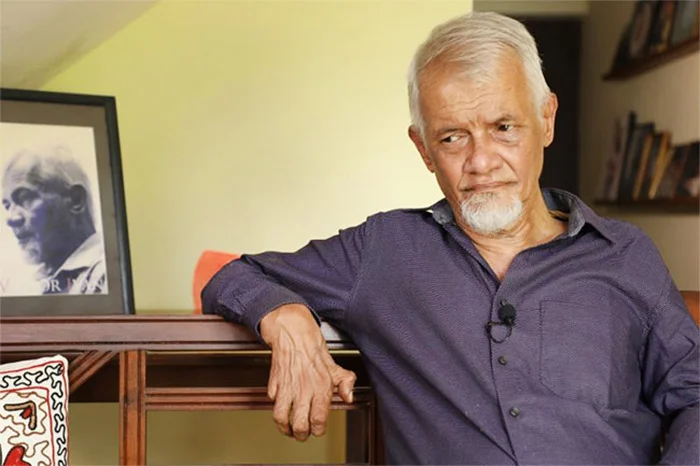
By Lynn Ockersz
He stormed the bastions of power,
With sharp ideas and a golden pen,
Exposing their foundations of sand,
Cutting through shams and hypocrisies,
And giving in shining silver the hard truth,
All the while pointing to quality standards,
Which in the noble art of journalism,
Should be jealously held and kept,
And verily Victor Ivan we could say,
That the Fourth Estate of this stormy Isle,
Will be very much the poorer without you.
Midweek Review
SC gave country timely reprieve from visa scam:

Authorities still unable to restore disrupted passport supply
Text and pic By Shamindra Ferdinando
The National People’s Power (NPP) government hasn’t been able to normalize the issuance of new passports and renewal of existing passports yet, while tens of thousands of desperately poor Lankans are trying to go abroad to earn a living, to keep their home fires burning, on top of well over a million of their fellow countrymen/women who are already doing so, without being a burden to anyone. The situation at the passport office is unlikely to be restored anytime soon.
The latest Foreign Employment Bureau data shows that a total of 312,836 Sri Lankans left the country for overseas jobs last year. Among them 185,162 were male workers, while 127,674 were female, who mainly work as housemaids.
In spite of the change of rulers. following the presidential election, the whole process remains thoroughly disorganized for want of uninterrupted supply of new passports.
For those seeking to obtain a new passport, at a cost of Rs. 10,000, will have to wait patiently for months. It costs twice that amount to obtain a PP through the Immigration and Emigration Department’s one day service. For those who are desperately poor, even Rs 10,000 is obviously astronomically high. The Department is unable to indicate when its normal service can be fully restored.
Foreign Minister Vijitha Herath recently acknowledged that the government is yet to choose a new supplier of passports. On the part of the troubled Immigration and Emigration Department, there is absolutely no hesitation in acknowledging the continuing crisis created by the previous regime, led by Wickremesinghe.
The previous dispensation failed to meet the growing requirement for passports, while at the same time it rushed headlong to finalise a controversial agreement for the issuance of online visas with the involvement of foreign entities at tremendous cost. That agreement came into operation on 07 May, 2024.
In terms of the hotly disputed agreement, inked between the Immigration and Emigration Department and a foreign consortium – GBS Technology Services & IVS Global-FZCO and its technical partner VF Worldwide Holdings Ltd., the latter received exclusive rights to process online visa applications.
Who facilitated the deal between the Dubai-headquartered consortium and the government of Sri Lanka? In June 2023, the Public Security Ministry received, what some called, unsolicited proposal though the writer believes that move had been in line with a conspiracy to terminate the existing agreement with state-owned enterprise Mobitel and the Immigration and Emigration Department. That proposal, titled ‘Comprehensive Proposal on E-Visa, Consular Services, Visa Services, Biometric Services and Tourism Promotion,’ was meant to pave the way for the new agreement. The Wickremesinghe-Rajapaksa government was in a hurry to conclude the agreement.
But the original proposal had been made in March 2022 before a violent protest campaign that targeted the ouster of President Gotabaya Rajapaksa got underway on 31 March, 2022, with their first demonstration outside his private residence at Mirihana. The same proposal was made to the Foreign Ministry, in October 2022, a couple of months after President Gotabaya Rajapaksa was forced out of office by violent protesters, who even stormed the official residence of the President, where he had taken up residence after he had to flee from his private home in March. The Dubai-based company then took up its proposal with the Public Security Ministry, in June 2023, and, following Cabinet authorization, the two parties finalized the agreement on 31 December, 2023.
The utterly corrupt decision that had been made without competitive bidding meant to ensure the best for the country, resulted in a shocking increase in visa fees – from the previously affordable $ 1 fee charged by Mobitel to a staggering $ 25 per visa. The issue exploded in the run-up to the presidential election. In fact, it was a major issue on the election platform. No less a person than NPP presidential candidate Anura Kumara Disanayake (AKD) dealt with the issue quite often as the Opposition fiercely attacked the Wickremesinghe administration over what was widely called ‘online visa scam.’
The absence of long queues doesn’t mean the situation is better. Unless the government takes remedial measures promptly, the situation is going to deteriorate, regardless of half-baked solutions provided by the government.
Under the leadership of Dr. Harsha de Silva, the Committee on Public Finance (CoPF) inquired into the matter. No holds barred investigation revealed that the previous visa service provider Mobitel had submitted several proposals to upgrade the system, all at a much lower cost – just $ 1 per visa, though the government selected the foreign consortium.
The question remained as to why the government ignored Mobitel’s offer and ended up paying so much more for a less secure system?
Widespread accusations pertained to the online visa scam and disruption of the new passport supply line, too, contributed to the unprecedented NPP victories at the presidential and parliamentary elections. The voting public realized the gravity of the situation as the Supreme Court stepped in and quashed the sordid deal in August 2024, just weeks before the presidential election.
The SC suspended the controversial visa scheme. The court ordered the immediate restoration of the low cost and efficient previous system run by Mobitel. The online visa scam dealt a crushing blow to Wickremesinghe’s presidential election bid.
A cumbersome process
The writer was among those present on the second floor of the Department of Immigration and Emigration at Suhurupaya, Sri Subhuthipura Road, Battaramulla on the morning of 08 January, 2025, when an official declared that those who wanted to obtain new passports sooner may comeback exactly in one month after handing over their applications, to make representations to a special committee tasked with expediting the process. That message was repeated on several occasions.
In the absence of a steady supply of new passports, the powers that be adopted a system meant to delay the entire process, much to the disappointment of the public. Regardless of the change of the government, the disgraceful system continues. Let me explain how hapless people are being harassed by an utterly corrupt and inefficient bureaucracy.
Having submitted photographs online to the Immigration and Emigration Department on 20 November, 2024 (the day before the parliamentary election), the writer was able to secure an appointment on 08 January, 2025, just to hand over the applications – 50 days from the day the writer submitted photographs via a studio as instructed by the Department.
After the handing over of an application, one has to wait for a month to make representations to the Department. But, there is no guarantee that the Immigration and Emigration committee can be convinced. Those who can afford may obtain a new passport through the ‘one-day service’ but at a very much higher cost. Those who boast of friendly and cost-effective government services owed the public an explanation as to why people are deprived of an opportunity to obtain a passport within a reasonable period of time.
It would be pertinent to mention that it could take as many as 80 days to meet the Immigration and Emigration committee from the day one submitted photographs online.
Advice offered by Immigration and Emigration official on the second floor underscored that there is no time-frame for issuance of passports for those depending on the normal service. The process can take a couple of months and the situation may take a turn for the worse if the government fails to reach agreement on a suitable supplier of passports.
The crisis in the Immigration and Emigration Department exposed the previous Cabinet-of-Ministers, headed by President Ranil Wickremesinghe. The decision-making process in respect of the issuance of online visa and shortage of new passports failed on the part of the Cabinet to ensure transparency in such a vital matter.
The Controller General of Immigration and Emigration, Harsha Illukpitiya, had to pay a huge price for playing ball with the then government. The SC, on 25 September, 2024, remanded Illukpitiya, on contempt of court charges for failing to implement the interim order and other orders in respect of the implementation of the electronic visa process. The SC three-judge bench, consisting of Justices Preethi Padman Surasena, Kumuduni Wickremasinghe, and Achala Wengappuli fixed the matter for inquiry on 22 January, 2025 (next Wednesday).
The SC dismissed Illukpitiya’s defence that his failure in this regard hadn’t been deliberate and the delay was due to technical issues. The whole issue should be examined taking into consideration the then President Ranil Wickremnesinghe’s efforts to put off the presidential election the way he made the Local Government polls disappear and the contemptible bid to retain Deshabandu Tennakoon’s services as the Inspector General of Police. The President’s move on the IGP was contrary to the SC decision pertaining to the controversial cop. But, Wickremesinghe until the very last moment sought to consolidate his hold through questionable means.
The UNP leader, for some unexplainable reason, went along with Public Security Minister Tiran Alles in the much discussed online visa matter and the IGP’s issue. The government should have realized the crisis it was heading for when the SC, on 02 August, 2024, issued an interim order suspending the contract given to a private consortium.
The SC issued this order after considering Fundamental Rights (FR) petitions filed by the then MPs M.A. Sumanthiran (ITAK), Rauff Hakeem (SJB), Patali Champika Ranawaka (SJB) and a few others. There were altogether eight petitioners.
During proceedings, on 25 September, 2024, President’s Counsel Sumanthiran asked the SC to remand Illukpitiya pending the conclusion of the cases. In a way, the SC brought the government down to its knees.
On a SC directive, the NPP government appointed the Additional Secretary of Public Security Ministry, B.M.D. Nilusha Balasuriya, as the Acting Controller General of Immigration and Emigration.
SC shows the way
Sumanthiran failed to get elected at the last general election, while United Republican Front leader Patali Champika Ranawaka skipped the election over differences with the SJB leadership. Hakeem got re-elected again on the SJB ticket. The SJB MPs joining ITAK heavyweight proved that political parties could work together to fight corruption at the highest level. Among the respondents were the then Minister of Public Security Tiran Alles, the Controller General of Immigration Illukpitiya, the Sri Lanka Tourism Development Authority, GBS Technology Services & IVS Global- FZCO, VFS VF Worldwide Holdings LTD, the Cabinet of Ministers and the Attorney General.
The successful action must encourage other lawmakers to move relevant courts if the government resorted to corrupt practices. Illukpitiya’s fate is nothing but an unprecedented warning to all those carrying out illegal orders, that they may face catastrophic consequences.
Following the SC order, Sumanthiran, Ranawaka and Hakeem addressed the media. Ranawaka declared: “We filed a case against the e-visa fraud. The Supreme Court, after examining the complaint, ordered the return to the old ETA (Electronic Travel Authorization) system until the case was resolved. However, the Controller General Illukpitiya failed to implement the order due to the influence of the former Minister and President, who acted in defiance of the law.
Ranawaka alleged that the former Public Security Minister’s overwhelming ego is the primary cause for this. “The ruling also serves as a lesson for public sector officials about blindly following politicians’ demands.”
The SC order demonstrated that the Cabinet of Ministers can be challenged, successfully. Let me remind you of the disclosure that former Cabinet colleagues of disgraced Health Minister Keheliya Rambukwella told police they approved his Cabinet proposal that paved the way for the procurement of substandard human immunoglobulin vials amid a shortage of medicines in the country because they trusted him.
Over a dozen ex-Ministers claimed that they wouldn’t have backed Rambukwella’s Cabinet proposal if they knew the Health Minister was making false claims. The police questioned them pertaining to the SC order in respect of that particular investigation.
The crux of the matter is whether members of the Cabinet, who backed the online visa fraud, can be subjected to CID investigations.
Alles is on record as having said that the Parliament unanimously approved the changes to the visa processes, including the introduction of several new visa categories, while the involvement of the foreign consortium in managing online and on-arrival visas was referred to the Cabinet of Ministers on two occasions and got its sanction.
Citizens’ actions
The massive fraud perpetrated by the government may have gone unnoticed if not for video clips of an irate passenger, later identified as Sandaru Kumarasinghe, lambasting the government for handing over the responsibilities to a foreign consortium.
At the behest of the government, the Katunayaka police recorded Kumarasinghe’s statement who fiercely criticized the foreign consortium for denying an online visa to his wife, a foreign citizen.
The Opposition capitalized on the angry public sentiment caused by Kuamarsinghe who questioned the Wickremesinghe-Rajapaksa government’s right to outsource such vital responsibilities to a foreign consortium at the expense of local competitors. The incident at the BIA in late April or early May, 2024, drew public attention.
Kumarasinghe’s declaration of Indian involvement in the operation, and subsequent statements, compelled the Indian High Commission in Colombo to issue the following statement: “We have seen reports and comments, including in social media, regarding Indian companies taking over visa issuance at Bandaranaike International Airport (BIA), Colombo. The companies referred to in these reports are not India-based or Indian and are headquartered elsewhere. Any reference to India in this context is unwarranted.”
The report of the Committee on Public Finance on the visa matter can be the basis of NPP government investigation. The circumstances under which Mobitel that had been providing services, since 2012, was discarded in spite of submitting proposals for system improvements in July and November 2020 (revised proposal) and in August 2023. The Immigration and Emigration Department unceremoniously rejected Mobitel’s strong stand that it had the required technological capacity. The powers that be had been determined to abolish their agreement with Mobitel despite it being a responsible state entity, at any cost. Who benefited from the deal with the Dubai-based company?
In the absence of proper mechanism to evaluate and supervise such major proposals, influential persons manipulated the process at will. There can’t be a better example than the Dubai-based company conveniently leaving out USD 200 mn investment earlier promised to make available for necessary technical equipment, software, and knowledge for system integration with the Immigration and Emigration Department.
Perhaps the Commission to Investigate Allegations of Bribery and Corruption (CIABOC), too, should look into this matter. The CoPF investigation revealed how the government can be manipulated with catastrophic consequences.
-

 News6 days ago
News6 days agoLatest tax hike yields Rs. 7 bn profit windfall for tobacco companies
-
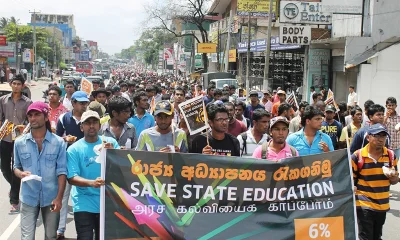
 Features6 days ago
Features6 days agoMyth of Free Education: A global perspective for Sri Lanka
-
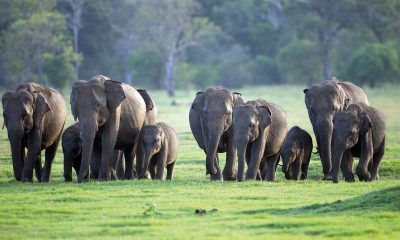
 Features3 days ago
Features3 days agoIS THIS THE FINISH OF THE SRI LANKAN ELEPHANT?
-

 News3 days ago
News3 days agoElectricity tariff reduction: 20% inadequate says consumers
-

 Editorial4 days ago
Editorial4 days agoGovt. taken for a ride again ?
-
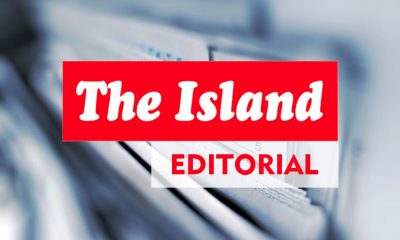
 Editorial5 days ago
Editorial5 days agoLies and mandates
-
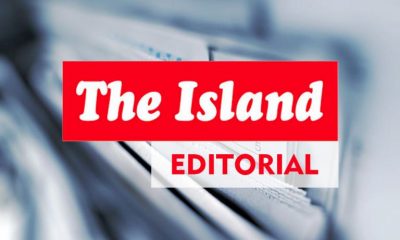
 Editorial6 days ago
Editorial6 days agoLurking danger and ‘NATO’ officials
-
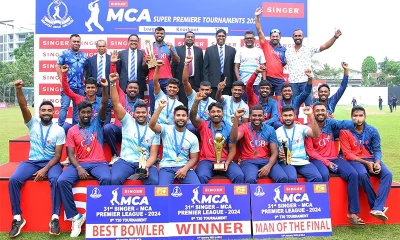
 Sports6 days ago
Sports6 days agoCDB crush Fairfirst Insuarance by five wickets











